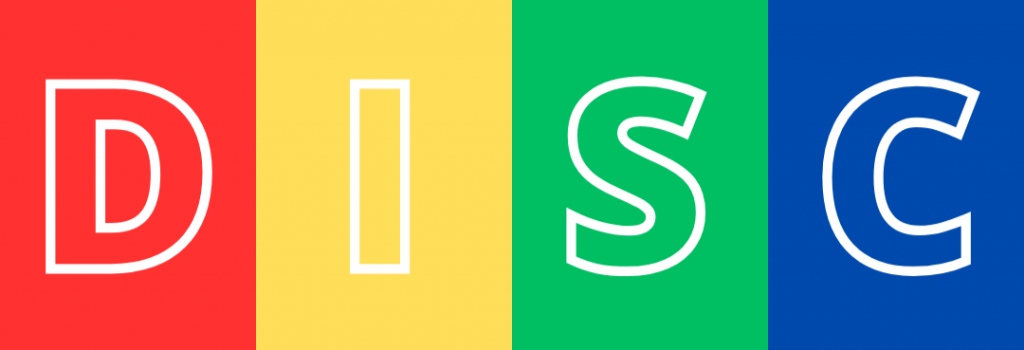Why are they so annoying?

Have you ever caught yourself thinking, "Why on earth do they do that?" about a colleague?
I'll admit I have. I know I should know better but we can’t help it. We all find certain communication styles challenging at times, and that's completely normal.
The 'Why' behind different styles
During my years of coaching, facilitating, and mediating, I’ve learnt that what may initially seem annoying is often simply different. We naturally feel at ease with those who communicate and work in ways similar to our own. It’s typically when someone's approach differs from our natural style that we can experience tensions.
This is where DISC profiling shines. It's not about labelling people or putting them in boxes (I'm adamantly against that), but rather a very practical tool that helps us understand and appreciate the rich tapestry of styles and preferences across our workplaces.
What exactly is DISC?
DISC explores individuals' preferred communication styles, our responses to our working environment and helps us recognise behavioural patterns in four key dimensions:
- D - Dominance: How we focus on getting results and want to be in control
- I - Influence: How we interact with and attempt to influence others
- S - Steadiness: How we respond to change and desire a harmonious environment
- C - Conscientiousness: How we respond to rules and procedures and order
It's important to remember that nobody is purely a D, I, S, or C style. We all have a unique blend of all four dimensions, with some more pronounced than others in different contexts.
You may recognise these from other frameworks, such as Colour Works, where similar characteristics are identified as Red (D), Yellow (I), Green (S), and Blue (C). Whilst the terms and language may vary, the underlying psychological principles are the same.

The beauty of blends
What I really appreciate about DISC is that it goes beyond just categorising individuals into one type or another. It emphasises your unique blend of the four styles and how they work together to give you your communication preferences.
There are 41 potential blends in DISC. This means that even people who share similarly dominant traits can express them in different ways depending on their unique blend – it's the intensity of each style that makes the difference. This nuance matters because it recognises that while we may have dominant tendencies, we are all capable of adapting our style as needed.
Back to other people’s 'annoying' behaviours
Let's look at how different DISC preferences might show up or be perceived in the workplace:
High D (Dominance)
- Gets straight to the point (may seem blunt to others)
- Makes quick decisions (may appear impatient)
- Focuses on results (might overlook people's feelings)
- Values efficiency (could rush important processes)
When working with a team that includes high-D individuals, notice how others sometimes misinterpret their directness as rudeness whereas from their perspective they're simply being efficient with their communication.
High I (Influence)
- Enthusiastic and expressive (can irritate quieter types)
- Enjoys socialising (might chat when others want to work)
- Thinks out loud (may seem chaotic)
- Values personal recognition (can come across as a bit needy)
I-style communicators bring energy, enthusiasm and optimism, yet not everyone appreciates their need for people context during a focused task-based meeting.
High S (Steadiness)
- Patient and supportive (can appear too slow to act)
- Prefers stability (might resist changes)
- Makes decisions collaboratively (can seem indecisive)
- Values harmony (may avoid important confrontations)
I've coached many S-style leaders who have struggled with delivering tough feedback, even when it was absolutely necessary.
High C (Conscientiousness)
- Detail-oriented (might get stuck in analysis and research)
- Seeks accuracy (can be a perfectionist)
- Researches thoroughly before deciding (may delay progress)
- Values quality standards (can seem overly critical of mistakes)
High-C team members frequently save organisations from numerous errors, even when others become impatient with their meticulous checking processes.
Connecting to STREETCREDS
If you've worked with me or read my book, you'll know about my STREETCREDS framework for effective workplace relationships. The 'R' in CREDS stands for Respectful. I find that understanding your own and others DISC styles can be a powerful way to show genuine respect.

Respecting people's different styles doesn't mean changing your personality. Instead, it requires expanding your range in how you approach different people and situations. When we recognise diversity of thought and approach strengthens teams, and acknowledge others may process information differently, we can adapt our own communication style to be more effective.
Why personal feedback is important
I firmly believe that reading a DISC report alone isn't enough. The true value lies in personalised feedback, interpretation and exploration. It's common to see people receiving psychometric reports and feeling a bit lost trying to interpret them on their own. This misses a wonderful opportunity for real insight and personal growth.
Whenever someone works with me, I make sure to have a one-to-one feedback session to discuss their report with them, explore how accurate they think it is, and bring it to life so it’s a meaningful piece of feedback. This personalised approach guarantees deeper understanding of their profile and empowers them to apply their insights in a practical way.
Practical ways to apply DISC insights
Adapt your style: After recognising your preferences and those of others, adjust your strategy accordingly. For a high-D colleague, be more direct and concise. When engaging with a high-S individual, invest time in relationship-building and provide detailed explanations of any changes.
Create well-rounded teams: Those with high D and I styles often shine when it comes to brainstorming and jumping into action, whereas S and C styles will usually be quieter. Remember, a diverse team goes beyond just visible differences. Embrace a variety of ways of thinking and communicating; every style adds value.
Manage conflict more effectively: Tensions in the workplace often come from different styles rather than substantive disagreements. DISC provides a neutral language to discuss and address these differences, helping to depersonalise conflicts.
Improve decision-making: Recognising your personal style and preferences allows you to overcome potential blind spots. We all have style-related blind spots that can be addressed once we become aware of them.
Understanding, not labelling

The greatest value of DISC isn't labelling people but creating understanding. It helps explain natural tendencies and preferences whilst giving us a shared language to discuss differences constructively.
That's why I would never say 'you're a D' but rather 'you have D-style preferences.' This small linguistic shift matters because it acknowledges the fluidity and contextual nature of our communication styles.
The connections we share with one another are at the core of what makes us productive. Meaningful change happens through thoughtful communication and authentic conversations between people. It's our daily chats that truly matter, and each one of these has the potential to enhance our relationships, strengthen our teams, and uplift our organisations. What’s not to love about that?
So the next time you think, "why are they so annoying?" take a moment to reflect—perhaps it’s simply they have different communication preferences. And far from being annoying, that difference could be just what your team needs.
Discover more
If you're curious about your own DISC profile or how DISC could really enhance communication within your team, do get in touch. Whether you're interested in a personal DISC profile and feedback session or a fun team workshop, feel free to reach out to learn more.

